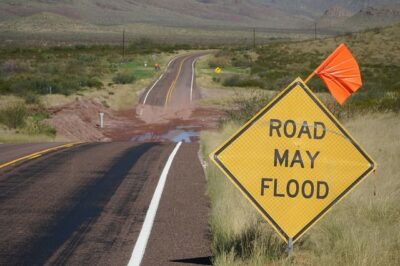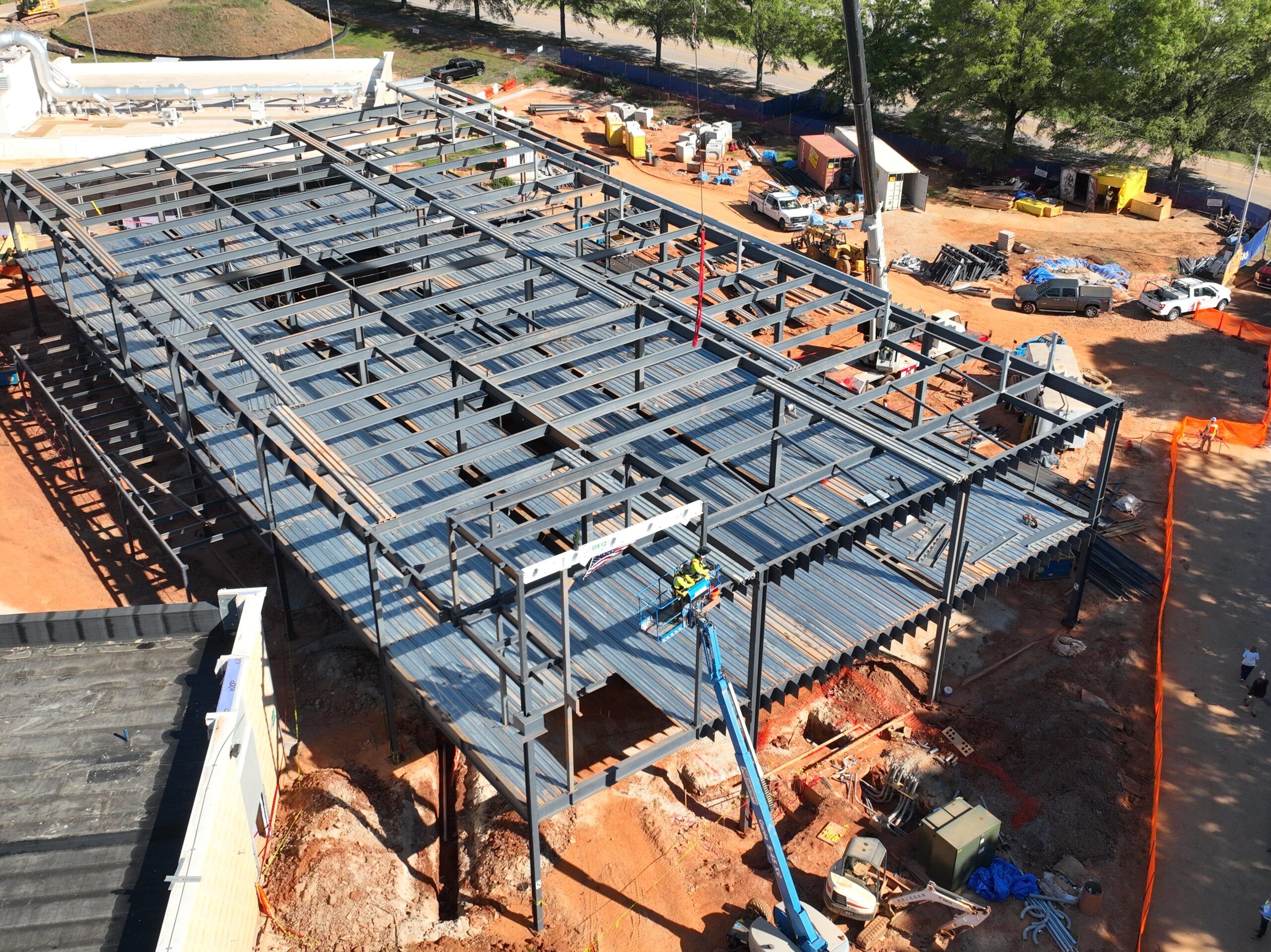The news is filled with stories about catastrophic floods across the US. From coastal hurricanes to inland flash floods, water damage is a growing threat.
Whether you’re a homeowner or a business owner, flooding can cause devastating financial losses. If you ever find yourself in an unfortunate flood situation, then asking “How to find a flood restoration company near me?” is your best bet. The Federal Emergency Management Agency (FEMA) estimates that an inch of water can cause over $25,000 in damage to your home.
With flood risks on the rise due to climate change, taking proactive steps to protect your property is more important than ever. Flood restoration companies help you mitigate damages and begin your recovery process. The FEMA recommends adopting personalized mitigation strategies for increased safety.
Fortunately, advancements in construction techniques offer promising ways to safeguard your property against these rising waters. These techniques minimize extensive restoration work and provide homeowners with peace of mind.
Elevated Foundations
An effective way to protect buildings from floods is by elevating the foundation above the flood level. It’s also known as Base Flood Elevation (BFE).
This involves raising the lowest floor structure by at least one foot above the BFE. There are a few ways to achieve this elevation. You might use:
- Pier and beam foundations: These lift the home on stilts or columns, allowing floodwater to pass underneath.
- Stem wall foundations: These are raised concrete walls that support the structure above the flood level.
- Filled concrete slabs: These raise the entire foundation slab to the required elevation.
Elevated foundations are a proven method for flood mitigation, especially in coastal areas or regions prone to frequent flooding. The National Institute of Building Sciences shows that complying with the building code standards for floods can save $11 for every $1 spent. Moreover, any home with an above-code design could save $4 for every $1. This cost-benefit ratio highlights the long-term savings of investing in mitigation measures.
Besides securing your home, elevating your home also lowers your insurance premiums.
Flood-Resistant Building Materials
In addition to elevated foundations, using flood-resistant building materials is crucial in modern construction, especially in areas affected by overland flow brisbane.
Materials like concrete, steel, and specially treated wood can withstand exposure to water better than traditional building materials. These materials are often used for structural components like walls and floors. They ensure your home can withstand the impact of floodwaters. New innovative materials are being developed to enhance flood resilience.
For example, there are advanced waterproofing products that can be applied to existing materials, making them more resistant to water damage. Insulation and drywall alternatives, like closed-cell foam insulation and moisture-resistant drywall, are also gaining popularity.
These materials can prevent water absorption and subsequent mold growth, which can be a significant problem after a flood. Restoration Contractors support this, as fast and efficient water damage repair is crucial to minimize further damage and restore your property.
Flood Vents and Open Foundations
Imagine your home as a ship. In a storm, you wouldn’t want all the hatches sealed shut, right? The same concept applies to flood vents.
These openings allow floodwater to flow through the lower levels of a building, preventing the buildup of pressure that can cause structural damage. Sealing entry points, like windows and doors, with water-resistant barriers is another effective waterproofing technique. These barriers can withstand significant water pressure, preventing water from seeping into your home during a flood.
Similarly, open foundations, like crawl spaces, offer less resistance to water, allowing it to pass through without jeopardizing the building’s integrity. While these methods have their limitations and aren’t suitable for every situation, they offer viable options in certain flood-prone areas.
Landscaping and Drainage Strategies
Believe it or not, your landscaping can be a powerful tool against flooding. By grading your property and using specific plants, you can create a natural system that directs water away from your building.
Rain gardens, for example, are designed to contain and absorb unwanted rainwater. Additionally, permeable paving materials like porous concrete allow water to seep into the ground instead of running off into your property. Combined with well-placed French drains, sump pumps, and backwater valves, you can reduce the risk of water pooling around your foundation.
Additionally, technological advancements in drainage systems, such as smart sensors that monitor water levels, enhance flood protection.
Smart Technology and Flood Detection Systems
Technology is also coming to the rescue in fighting flood damage. Smart devices like water leak detectors and flood sensors can detect potential flooding and alert homeowners.
For instance, smart sump pumps activate whenever water is detected. This prevents flooding in basements and other vulnerable areas. These early warnings allow you to act before significant damage occurs. The Insurance Information Institute says homes with smart water leak detectors are less likely to suffer significant water damage. These devices provide early detection, allowing homeowners to address issues before they escalate.
Using smart technology in your home is a smart investment for flood prevention. However, the issue is that 14% of homeowners are unaware of their flood risks. Moreover, an extra 64% believe that they aren’t at risk of flooding. This, in turn, has caused about 40% of owners to ignore basic maintenance. Furthermore, around 50% of them have neglected making resilience-related improvements.
Flood-proofing Utilities and Appliances
Floodwater doesn’t just damage structures. Instead, it wreaks havoc on your home’s electrical and mechanical systems. To mitigate this risk, consider elevating electrical panels, HVAC systems, and other utilities above the potential flood level.
Moreover, if you have a basement or ground-level floor prone to flooding, opt for water-resistant or submersible appliances. These simple precautions can save you thousands of dollars in repairs and replacements.
Commonly Asked Questions
Q1. Do Flood-Resistant Building Materials Cost More Than Traditional Materials?
Yes, flood-resistant materials often come with a higher upfront cost than traditional options. However, they can save you serious money in the long run. This is because they reduce the amount of maintenance and repairs after a flood.
Consider it an investment in your home’s resilience and longevity.
Q2. How Can I Find the Base Flood Elevation (BFE) for My House?
Your local floodplain manager or building department can provide you with the BFE for your property. You can also check the FEMA Flood Map Service Center online, which provides detailed flood hazard information for communities across the US.
Q3. Are There State Regulations for Flood-Resistant Construction?
Yes, the National Flood Insurance Program (NFIP) sets certain thresholds for buildings in flood-prone areas. These standards often align with building codes like the International Residential Code (IRC), which includes flood-resistant provisions. If you’re building or renovating, check with your local building department to ensure you meet these requirements.
In conclusion, modern construction techniques are vital in protecting buildings from flood damage. While no construction method can guarantee 100% protection against extreme flooding, modern techniques do offer a significant advantage.
By incorporating these innovative solutions into your building plans, you can build a safer, more resilient future for your property. Remember, staying informed about flood risks and taking proactive measures can make a massive difference in protecting your home from floods.












